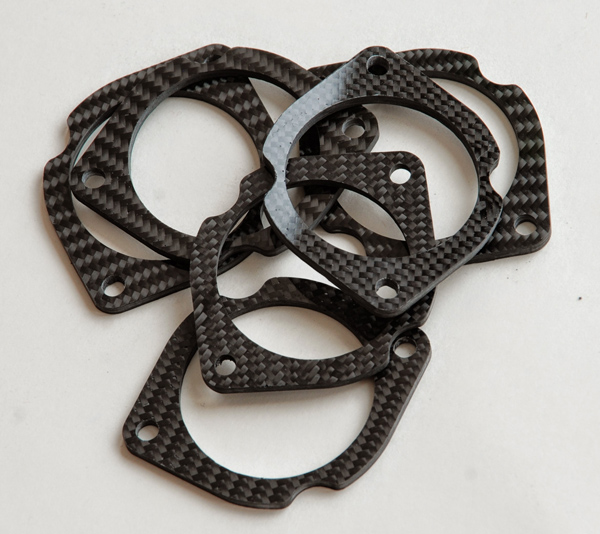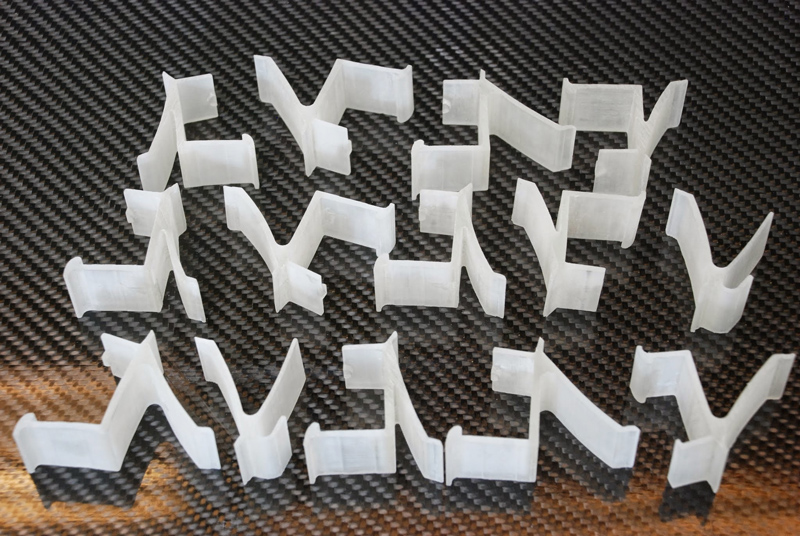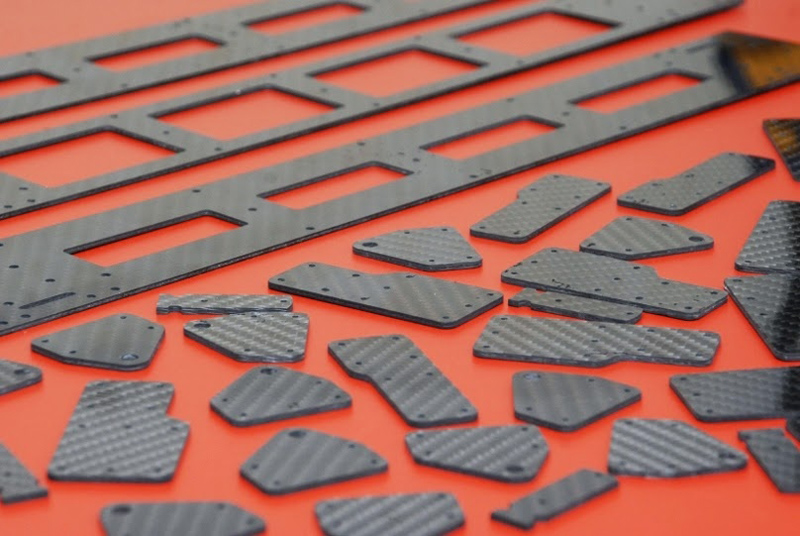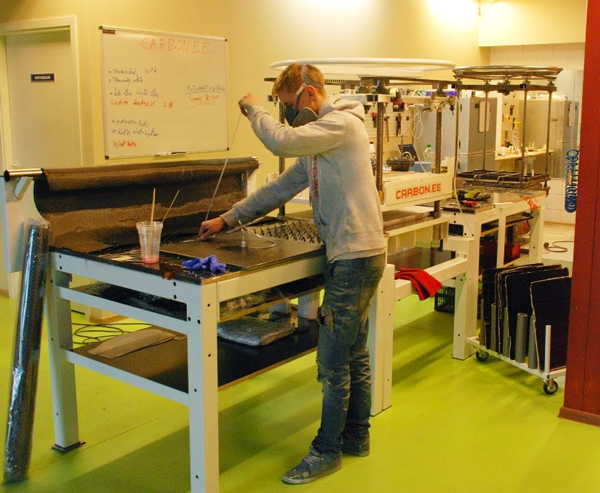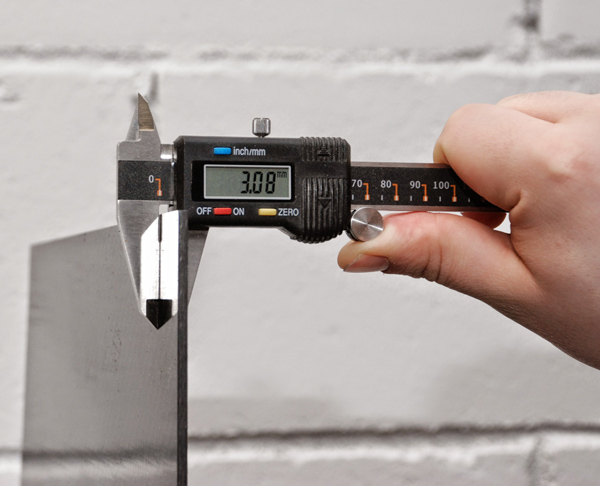Filling the gap between industrial and handicraft production
Three years ago Ben Einborn (26), a student in Tallinn Technical University, listened to a presentation of Defendec, an Estonian startup company of smart sensors. At Defendec they had a problem, that is very common for (Estonian) startups – no one wants to manufacture individual parts or small series. But Estonian startups can´t afford to order full wagon or even more of such parts from Chinese factories. So, Einborn founded his own company for serving startups. Together with his friend, software engineer Rinaldo Olberg (26), he started a small company to produce plastic parts for startups and small tech companies, who need only few pieces. Ben Einborn, who studied product development in Tallinn Technical University and claimed masters degree, decided to find out, if it is possible to create molds that are easy to produce and much cheaper than metal molds. Discussing it with a friend, a metallic worker and mechanical student, Siim Katkosilt (26), they found that no company in Estonia offers silicone molding proffessionally. Even countries nearby had only very few companies doing this kind of things. They only found one firm in Finland. Of course, companies like BMW or Mercedes had their own technologies to do this kind of very exact molds, but they do not share their secrets behind exact molds from soft silicone. Do not beleave Youtube videos
At the beginning, Einborn and Olberg thought that it should be quite easy to mold different details: just put the original part into liquid silicone and wait til it is hardened. But that’s not working, at least for hardware companies which need very accurate details. It is not suitable to act as hundreds of Youtube videos suggest, how to repair a broken toy with silicone molds of materials you can buy from general engineering stores. The first experience the three young engineers made, was that they need to do molding in a vacuum environment and use special professional silicone. Then they learned that it is very important how they fill the molds and how they break molds apart after. The most important thing to start a company was of course the market. You may order tens of thousands or even millions of individual parts from factories, but if you ask for 10 or 20 or even 100 or 1000 parts, no-one wants to fill your order at a reasonable price. 3D printing – competitor at very small amountsThere is a market for unique details manufacturing – 3D printing. Many companies in Estonia started 3D printer services to produce unique parts. But it is expensive and slow. A single detail print-out may need several hours, and if you order 10 pieces or more, it may take days or weeks to print. And the price - of course - is even higher. Silicone molds cost between 50 to 100 euros. For comparison – metal molds may cost hundreds or even thousands of times more. It all started under the roof of industrial loftAt first, Erismet moved to an old soviet-time hangar near Ülemiste junction – the room was fitted with some 3D printers, a self-made vacuum chamber and a hand press. Einborn and Olberg started the company in august 2010 to produce small series or even single parts with silicone mold technology. There was no need of fancy office and suited officials, startup people respected the company with hand-made units and small workroom somewhere in the industrial loft. But the first customers were actually not startups. The very first client was a logistics company who needed pedestals for barcode readers. They bought 5 to 6 pieces of them. First mold failed several times, but at last it was exact and strong. Other things asked were bodies of electronic sensors for Estonian military company and first big order came from famous Estonian shipping company Tallink. They wanted 6000 copies of a plastic detail for passenger ferry cabins and this very quickly. The Shipping company had no time to wait for metal molds. So, Einborn and Olberg mobilised all their family members and friends to do molding works with hundreds of molds. It took only eight days and Tallink was satisfied. Another order was from a shipping company, too. They ordered parts for fixing electronic price plates to sales counters. This was one of the biggest order – 10 000 pieces - and scratched the limit of silicone molding, as you need a lot of silicone molds – about 200 to produce such an amount of parts. But it´s still cheaper than ordering metal molds and producing plastic details the traditional industrial way. Plastic is not the limitEinborn learned that they cannot only manufacture plastic parts with silicone molds. You also may produce soaps, concrete things or candles. One client, for isntance, asked molds for special soaps, and they did a 3-in-one mold for soap manufacturing. It is possible to do details from any materials, only restriction is that this material is not heating the silicone higher than 294 degrees celsius. Today clients come with a CAD file of prototype and ask for 5 or 6 pieces of it physically made of plastic or other materials. The company usually prints the CAD file out with a 3D printer. With the printout they prepare a silicone mold. Therefore the mold is placed to a vacuum chamber. It is barrel with 0,5 meter diameter and special tubes for plastic and air addition. All the magic is to design pipes and cuts correctly for perfect filling the mold. Erismet designed this chamber from scratch. The next big thing – carbon fiberLast year Erismet moved to a larger premises to be ready for quick expansion. Because this time they are also focusing on another production – on carbon fiber plates. Marketing research showed that in Estonia and surroundings are only a few providers of carbon fiber plates or curved carbon fiber parts. Erismet engineers now have two interesting devices in the new workroom which look like giant juicers. Actually it is a carbon fiber press. All devices they have projected and done by themselves. Carbon fiber is very popular. The strong material is often needed in car and aerospace industry. Einborn keeps company secrets of new big clients, who need carbon fiber details. But some of them they can disclose. „Drone manufacturing is very popular,“ Einborn says, „we can do drone parts and cut them out from plate. Later we can do tubes and special forms if needed.“ The plates they do vary from 450 x 450 mm to 500 x 700 mm. Carbon fiber consists of carbon fiber layers (up to 10 layers) and pressurized resin. Carbon fiber press is manual, because it´s more secure and cheaper. Carbon fiber press is the best method to produce carbon fiber parts the industrial way – all parts look exactly the same and the quality does not vary as you know for example from boat builders – when workers paint different layers by hand. Conquer the world via e-storeMeanwhile German companies are among the purchasers of their products. Salesman Madis Kerna (26) started to sale products on company e-store Carbon.ee and they have sold to different countries on eBay as well. Even australians are very interested of carbon fiber details from Estonia. They have bought several times and are satisfied. So, why they order from Estonia? Kerna beleives that there are two main reasns: carbon fiber is cheaper and much stronger. There are some Canadian companies which say that it´s more like car industry quality. The company orders chemicals and materials from the same factories as Lamborghini and McLaren. The carbon fiber is from the same source where Airbus orders. Erismet shares room with another Estonian company – Ropeye, who produces rope fasteners for sailing yachts. They need very secure and strong parts and some tests proved, that manufactured plates of carbon fiber are strong enough for fasteners. There is always a product. Erismet tries to fill this gap.
03.05.2015 | Autor
Kaido Einama
-> Drucken
|
MEHR ZU DIESEM THEMA
TOP ARTIKEL
TOP AKTUELLsoeben aufgeschaltet
MEIST GELESEN
|
||||||||||||||||||||||||||||||||||||||||||||
|
|
|||||||||||||||||||||||||||||||||||||||||||||
|
|
|||||||||||||||||||||||||||||||||||||||||||||

